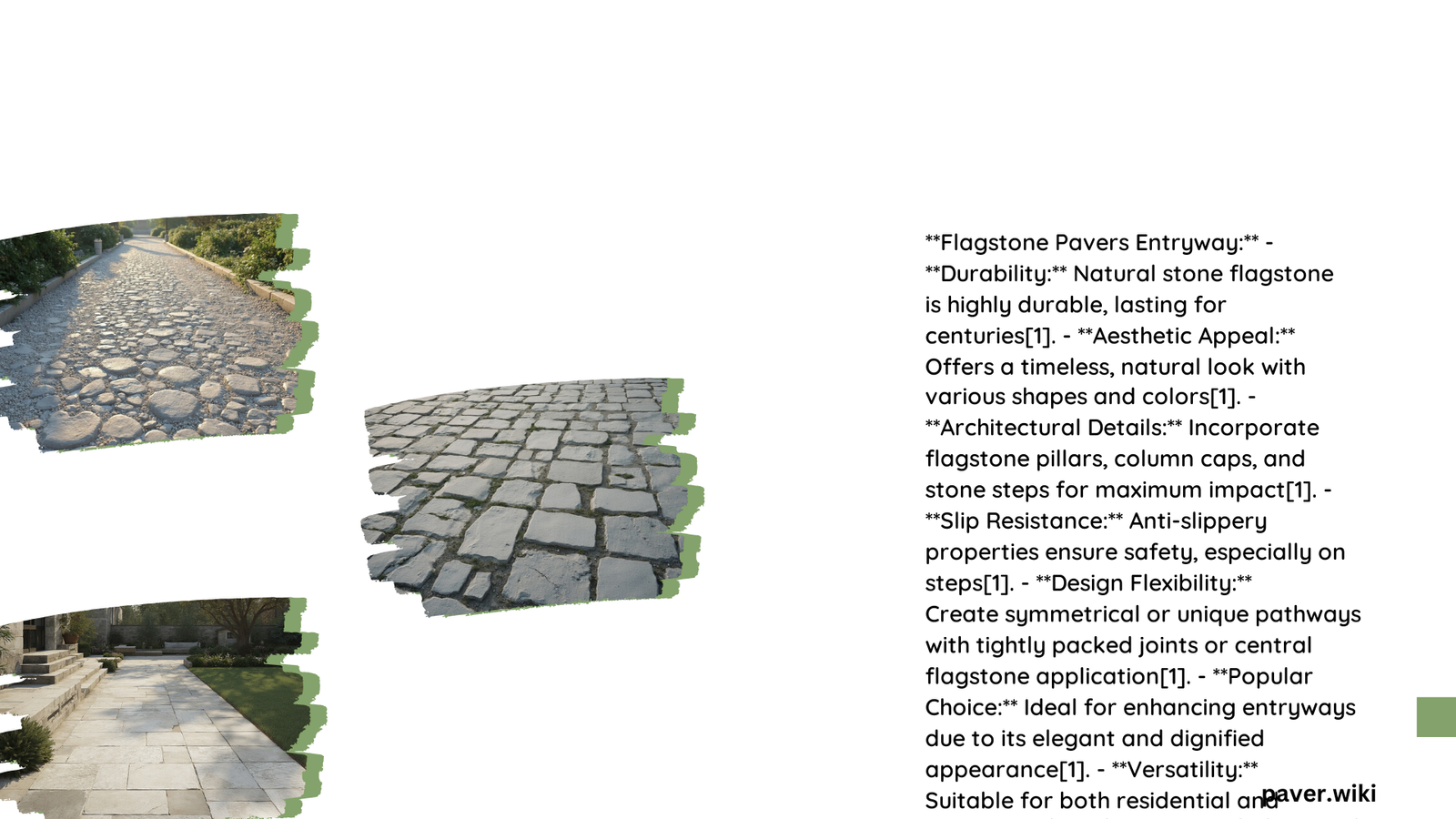Flagstone pavers are a popular choice for creating stunning entryways that blend natural beauty with durability. These versatile stones offer a unique, rustic charm that can transform any entrance into a welcoming focal point. With their irregular shapes and earthy tones, flagstone pavers provide a timeless appeal that complements various architectural styles. This guide explores the key aspects of using flagstone pavers for entryways, from selection to installation and maintenance.
What Are the Benefits of Using Flagstone Pavers for Entryways?
Flagstone pavers offer numerous advantages when used for entryways:
- Natural Aesthetics: Their organic shapes and colors create a warm, inviting atmosphere.
- Durability: Resistant to weather and wear, flagstones can last for decades with proper care.
- Versatility: Suitable for various design styles, from rustic to contemporary.
- Non-slip Surface: Provides excellent traction, even when wet.
- Low Maintenance: Requires minimal upkeep compared to other paving materials.
How to Choose the Right Flagstone Pavers for Your Entryway?

Selecting the perfect flagstone pavers involves considering several factors:
- Color: Choose from a range of earth tones to complement your home’s exterior.
- Texture: Opt for smoother surfaces for high-traffic areas or textured ones for a more rustic look.
- Thickness: Typically 1.75 inches for pedestrian use, ensuring stability and ease of installation.
- Size and Shape: Consider the overall design and pattern you want to achieve.
What Are the Standard Dimensions of Flagstone Pavers?
Flagstone pavers, such as the Rosetta Grand Flagstone Pavers, typically come in the following dimensions:
- Layer Size: 38″ x 42″ (0.96 m x 1.07 m)
- Thickness: 1.75″ (44.45 mm)
- Individual Pieces: Each layer contains 15 unique shapes
These dimensions allow for flexible design options while maintaining a consistent thickness for easy installation.
How to Install Flagstone Pavers for an Entryway?
Follow this step-by-step guide to install your flagstone paver entryway:
- Plan and Mark: Outline your entryway design with marking paint.
- Excavate: Dig to a depth of 8.75″ (218 mm) plus the paver thickness.
- Prepare Base: Add and compact a layer of gravel, followed by bedding sand.
- Lay Pavers: Place flagstones according to your design, leaving 3/8″ gaps.
- Level and Align: Ensure each paver is level and properly aligned.
- Fill Joints: Sweep jointing sand into the gaps between pavers.
- Compact: Use a plate compactor to settle the pavers into place.
- Final Touches: Add more sand if needed and clean the surface.
What Tools Are Needed for Flagstone Paver Installation?
Essential tools for installing flagstone pavers include:
- Shovel or excavator
- Level
- Tamping tool or plate compactor
- Marking paint
- Broom
- Wheelbarrow
- Rubber mallet
- Masonry saw (optional for cutting)
How Much Does a Flagstone Paver Entryway Cost?
The cost of a flagstone paver entryway can vary based on several factors:
| Item | Cost Range (per sq. ft.) |
|---|---|
| Flagstone Pavers | $6 – $15 |
| Bedding Sand | $1.50 – $3 |
| Jointing Sand | $0.50 – $1 |
| Labor | $3 – $10 |
| Base Materials | $2 – $5 |
Additional costs may include tools, equipment rental, and optional sealers.
What Maintenance Is Required for Flagstone Paver Entryways?
To keep your flagstone paver entryway looking its best:
- Regular Cleaning: Sweep weekly and wash with mild soap monthly.
- Weed Control: Remove any weeds growing between pavers promptly.
- Joint Refilling: Add sand to joints annually or as needed.
- Sealing: Apply a quality sealer every 2-3 years to protect against stains and weathering.
- Repairs: Address any loose or damaged pavers immediately to prevent further issues.
How to Design Patterns with Flagstone Pavers?
Create stunning entryway designs with these pattern ideas:
- Random Pattern: Lay pavers in a natural, irregular arrangement.
- Ashlar Pattern: Use rectangular cuts in a repeating pattern.
- Circular Design: Create a focal point with a circular arrangement.
- Mosaic Style: Combine various sizes and shapes for a unique look.
- Bordered Edge: Frame the entryway with a contrasting border.
What Are the Best Practices for Edging Flagstone Paver Entryways?
Proper edging enhances the appearance and longevity of your entryway:
- Use plastic, metal, or stone edging materials.
- Install edging before laying pavers for a clean finish.
- Ensure edging is level with the paver surface.
- Secure edging with stakes or concrete for stability.
- Consider decorative edging options to complement your design.
By following these guidelines, you can create a stunning flagstone paver entryway that enhances your home’s curb appeal and provides a welcoming entrance for years to come.
References:
– https://www.stonewoodproducts.com/product/rosetta-grand-flagstone-pavers/
– https://www.rosettahardscapes.com/products/dimensional-flagstone-patio-paver-slab/
– https://www.pavingdirect.com/info/paving-laying-patterns/
